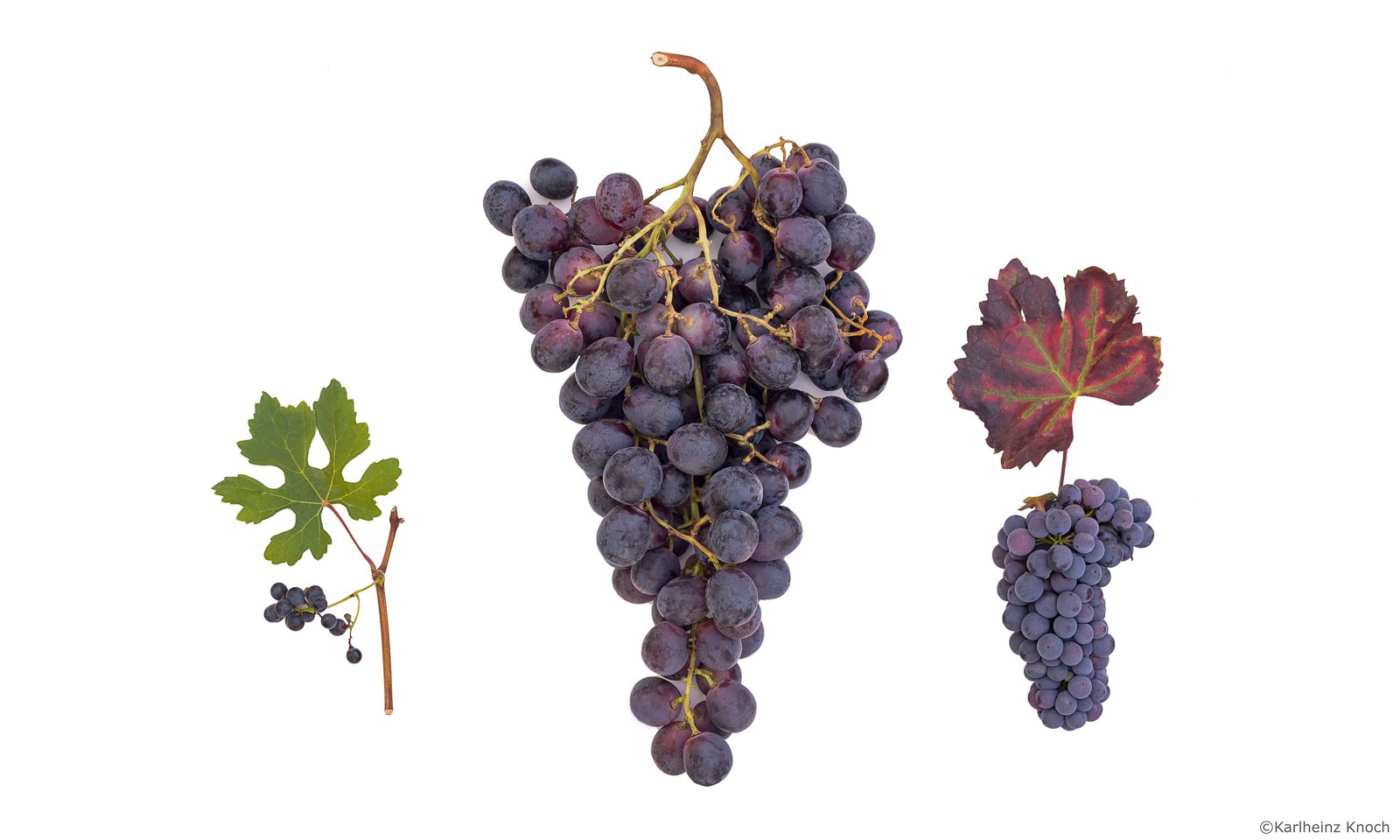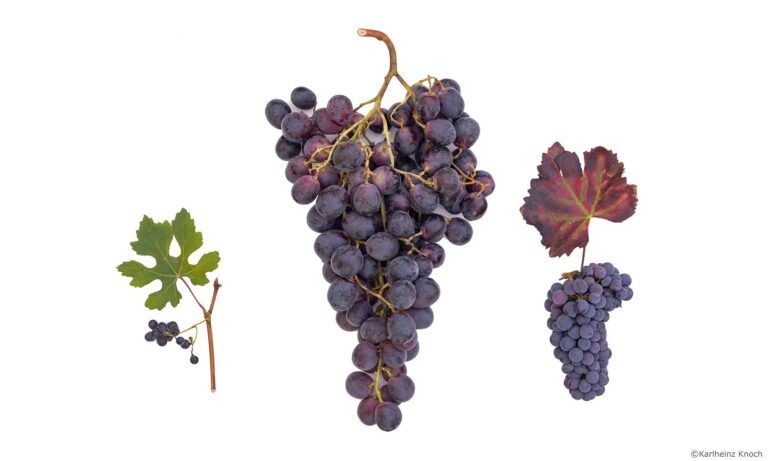Genome Research: Origin and Evolution of Vine. International Project Determines the Origin of Grapevine – KIT’s Wild Vine Database Helps Unveil the Genetic Tree – Publication in Science

Cultivation and growth of grapevines have strongly influenced European civilizations, but where the grapevine comes from and how it has spread across the globe has been highly disputed so far. In an extensive genome project, researchers from the Chinese Yunnan Agricultural University have determined its origin and evolution from the wild vine to today’s cultivar by analyzing thousands of vine genomes collected along the Silk Road from China to Western Europe. The collection of wild vines of Karlsruhe Institute of Technology (KIT) played an important role in the above project. The researchers published their findings in Science (VOL 379 ISSUE 6635).
Grapevine is among the world’s oldest crops. Wine was one of the oldest products traded all around the world. It pushed the exchange of cultures, ideas, and religions. At the end of the Ice Age, grapevine originated from the European wild vine, of which only a few relic populations have survived to date. One of these populations can be found on the Ketsch peninsula on the Rhine river between Karlsruhe and Mannheim. So far, the traces of when and where exactly wild vines were domesticated, of whether grapes for wine production and table grapes have the same origin, and how thousands of vines developed have been hidden in the mist of the prehistoric era. Still, it is clear that grapevine survived partly drastic climate changes and gathered a number of genes from Asia as a result of early human migration movements.
“For some years now, it has been known that today’s Silk Road once was a wine road. The Chinese symbol for alcohol is derived from Georgian wine jugs, so-called Qevri,“
explains Professor Peter Nick of KIT’s Joseph-Gottlieb Kölreuter Institut for Plant Sciences (JKIP). Nick, who had already cooperated with Chinese researchers in a previous project to determine grapevine genomes, suggested to collect grapevines along the previous Silk Road and to analyze their genomes.
Most Detailed Model of the Evolution and Domestication of Grapevine So Far
Nick’s idea gave rise to a network of researchers from 16 countries, who contributed not only wild vines and old species from their regions, but also knowledge on their origin and history. Under most difficult circumstances resulting from the global political situation, DNA samples of more than 3500 vines, including more than 1000 wild species, were sent to the State Key Laboratory for Conservation and Utilization of Bio-Resources of Yunnan Agricultural University. There, the genomes were decoded under the direction of Dr. Wei Chen and the most detailed model of the evolution and domestication of grapevines so far was generated. As a result, a number of new findings have been obtained. Now, the origin of winegrowing can be dated back to earlier than 11,000 B.C. in the South Caucasus. This means that wine is older than bread. Winegrowing technology very quickly spread across the Mediterranean to the west. Within shortest terms, cross-breeding with local wild vines produced a large variety of vines that were reproduced using cuttings. About 7000 years ago in the Middle East, large-berry species developed to table vines.
Domestication was accompanied by climatic changes, i.e. the end of the Ice Age, as well as by the warm and moist Atlantic, a climate period between 8000 and 4000 B.C. The resulting human migration movements left their traces in the genome of the vines. Medieval vines in Southwest Germany, for instance, contain genes of vines from Azerbaijan and Central Asia.
KIT’s Collection of Wild Vines Helps Unveil Grapevine Evolution
KIT did not only contribute the idea underlying this genome project, but also its globally unique collection of European wild vines and very old medieval species that had been deemed to be extinct until a few years ago.
“Search for the different grapevines was very thrilling,” Nick says. “Many vines came from the Magarach collection on Crimea. After Russian annexation in 2014, Ukrainian researchers fled and are now distributed all over the world, as are the vines.”
Nick located his colleagues in Russian-speaking social networks and brought them in contact with the Chinese research team. The genome project does not only shed light on the history of grapevine, but also is relevant to the future, he says.
“We have not only documented the entire biodiversity of species, but now possess all the genetic information for more specific use.”
Within the Interreg Upper Rhine Project KliWiReSSe, climate resilience genes from wild vines are crossed with presently grown vines to make them more resilient against the impacts of climate change. (rli)
Bibliographic information
Yang Dong, Shengchang Duan, Qiuju Xia, Zhenchang Liang, Xiao Dong, Kristine Margaryan, Mirza Musayev, Svitlana Goryslavets, Goran Zdunić, Pierre-François Bert, Thierry Lacombe, Erika Maul, Peter Nick, Kakha Bitskinashvili, György Dénes Bisztray, Elyashiv Drori, Gabriella De Lorenzis, Jorge Cunha, Carmen Florentina Popescu, Rosa Arroyo-Garcia, Claire Arnold, Ali Ergül, Yifan Zhu, Chao Ma, Shufen Wang, Siqi Liu, Liu Tang, Chunping Wang, Dawei Li, Yunbing Pan, Jingxian Li, Ling Yang, Xuzhen, Guisheng Xiang, Zijiang Yang, Baozheng Chen, Zhanwu Dai, Yi Wang, Arsen Arakelyan, Varis Kuliyev, Gennady Spotar, Nabil Girollet, Serge Delrot, Nathalie Ollat, Patrice This, Cécile Marchal, Gautier Sarah, Valérie Laucou, Roberto Bacilieri, Franco Röckel, Pingyin Guan, Andreas Jung, Michael Riemann, Levan Ujmajuridze, Tekle Zakalashvili, David Maghradze, Maria Höhn, Gizella Jahnke, Erzsébet Kiss, Tamás Deák, Oshrit Rahimi, Sariel Hübner, Fabrizio Grass, Francesco Mercati, Francesco Sunseri, José Eiras-Dias, Anamaria Mirabela Dumitru, David Carrasco, Alberto Rodriguez-Izquierdo, Gregorio Muñoz, Tamer Uysal, Cengiz Özer, Kemal Kazan, Meilong Xu, Yunyue Wang, Shusheng Zhu, Jiang Lu, Maoxiang Zhao, Lei Wang, Songtao Jiu, Ying Zhang, Lei Sun, Huanming Yang, Ehud Weiss, Shiping Wang, Youyong Zhu, Shaohua Li, Jun Sheng, Wei Chen:
Dual domestications and origin of traits in grapevine evolution, Science 2023, VOL 379 ISSUE 6635
Link: https://www.science.org/doi/10.1126/science.add8655
Press release from the Karlsruhe Institute of Technology – KIT



